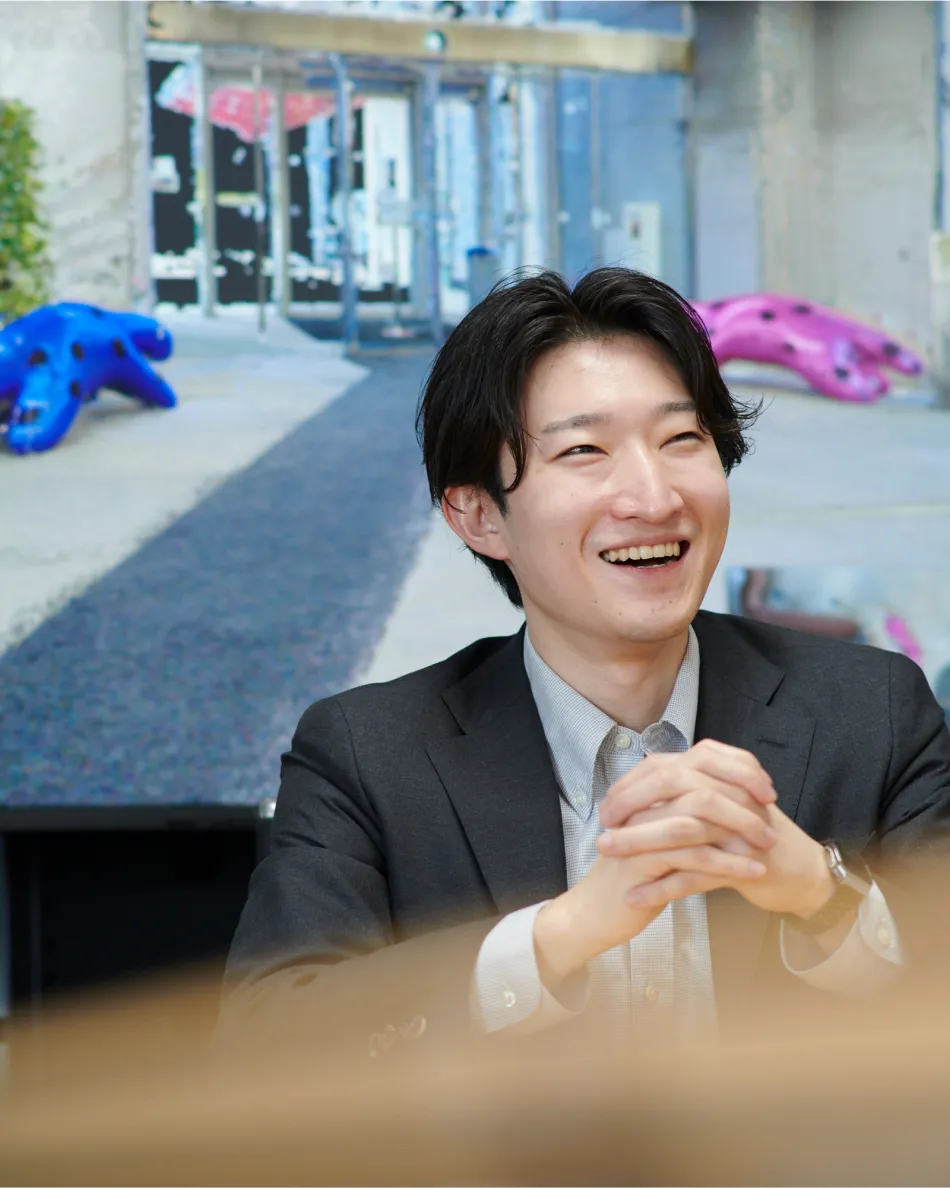In search of a sense of accomplishment
From my interest in the mechanical engineering field, such as cars, I chose to study at the Faculty of Electrical and Electronic Engineering at university. In my master's course, I was researching simulations related to superconductivity for my research.
During my job hunting, I learned about KKE through an article about a KKE employee that appeared in a job hunting booklet called “Campus Navi”. Having experienced the dangers of superconductivity through my research, I had a personal understanding of the value of simulation, so I was interested in KKE's business content, which is based on that technology.
When I attended the information session, I was attracted not only by the content of KKE's business, but also how the company approached it, as well as the culture of the organisation. I identified with the company's attitude of not simply seeking profit, but pursuing what is truly valuable for society, and its attitude of continuously reflecting on the value that only KKE could create. I still remember the words of the then-president at the company information session: “Rather than blindly expanding the scale of the company or increasing the number of employees, we will continue to grow steadily in a way that suits our scale”.
During my job-hunting, I looked at various companies. After that, I decided to join KKE because I thought that I would be able to feel that I would be achieving my role by steadily providing value to my clients, rather than working in a way where it was difficult to see my role in large-scale projects.
NavVis business: interesting both in appearance and content
I was assigned to the NavVis Business Section, at a time when it had just been set up. I was very surprised because it wasn't even among the options for assignment preferences. NavVis is a system that captures 3D data of a given space and facilitates its use. The hardware is often the focus of attention because of the impressive appearance of the measuring device, but in fact, the software inside has a lot of value. Expectations for 3D data are increasing in line with the world's digitalisation needs: it is used to grasp situations in places that are not easily accessible or dangerous, and to conduct simulations that are difficult to conduct in reality. For example, in car factories, it is used to check whether new car models would interfere with existing equipment when they are put on the production line, to study equipment layouts, and to examine how to set it up or remove it. BMW, for example, has used NavVis to create 3D models of more than 9 million square metres of its factories worldwide. We also foresee a need for digital data and NavVis in a wide range of other areas, for example, outdoor structures or trees.
By working in partnership with its developer, we aim to expand NavVis' business in the Japanese market and create new value by combining it with KKE's technology. There are various ways of working on the same theme, such as acting as a consulting partner for customers, or expanding sales channels in Japan. There are always new challenges to tackle, but we enjoy the changes that come with them.
Being curious and interested in anything new and different
KKE's business covers such a wide range of areas that the technologies and business structures handled here also differ. I have only worked in one department since joining the company, so my impressions may be biased, but I feel that there are many people at KKE interested in new technologies and products, world trends, or anything new and different. I heard that back when the NavVis business I am involved in started, there was no clear plan, and it was just curiosity that got it going. I think that people who are not too conservative and can be open to change can really make a difference at KKE.

